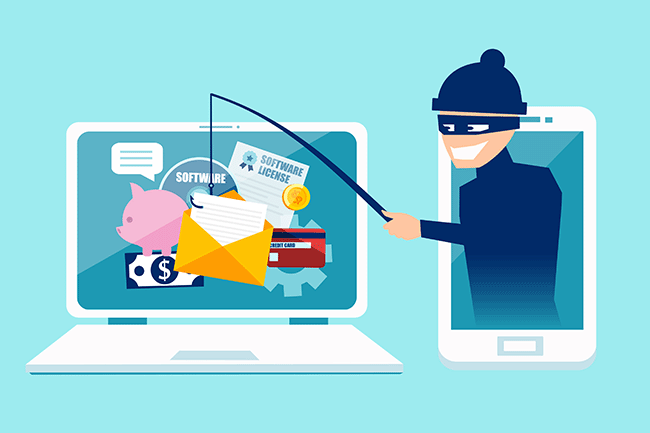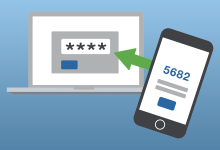
You’ve probably heard of the term Phishing before. Check out our Phishing 101: What You Need to Know about phishing. This article should help you understand the way hackers use phishing methods and how you can avoid them.
Phishing is a type of online scam that’s designed to steal your personal information, like your passwords, credit card numbers, and bank account information.
While there are many different types of phishing scams, they all share a few common elements. They usually involve email or text messages that appear to be from a legitimate company or organization but are actually from scammers. The goal is to get you to click on a link or open an attachment that installs malware on your computer or tricks you into revealing your personal information.
In this post, we’ll teach you how to spot phishing scams so you can avoid becoming a victim. We’ll also show you how to protect yourself from phishing attacks and what to do if you think you’ve been scammed.
What Is Phishing?
You’ve probably heard the term “phishing” before, but what does it actually mean? Phishing is a type of online attack that uses fake emails and websites to try and steal your personal information.
The goal of a phishing attack is to trick you into clicking on a link or entering your password into a fake website. Once the attackers have your information, they can use it to steal your identity or access your accounts.
Phishing is a very common attack, and it’s becoming more and more sophisticated every day. So it’s important to know how to protect yourself from these attacks.
How Phishing Works
Phishing is a form of online attack that involves tricking someone into revealing their personal information. Usually, this is done through email, where the attacker will send you a message that looks like it’s from a legitimate source—like your bank or credit card company.
But here’s the thing: phishing emails are easy to spot if you know what to look for. They’ll often have spelling mistakes or poor grammar, and the sender’s email address might not be official-looking. So if you’re ever in doubt, it’s best to just delete the email and call the company directly.
Phishing is a serious problem, but there are steps you can take to protect yourself from becoming a victim.
Types of Phishing Scams
There are all sorts of different phishing scams out there, but they all have one common goal—to steal your personal information. Here are a few of the most common ones:
Promoted contents:
1. The 419 scam: This one is named after the section of the Nigerian criminal code that it falls under. It starts with an email or a phone call from someone who says they’re from a foreign country and need your help to transfer money out of the country. They’ll promise you a large commission in return, but of course, there’s no money to be had. Instead, you’ll end up losing your hard-earned cash.
2. Phishing email: This is the most common type of phishing scam. It usually looks like it’s from a legitimate company, like your bank or credit card issuer, and asks you to click on a link or provide your personal information. If you do, you’ll end up giving thieves access to your account and they can steal your money or identity.
3. Spearphishing: This is a more targeted type of phishing scam that aims at specific individuals or businesses. The scammers will do their research and gather personal information about their targets before launching their attacks.
4. Whaling: This is a type of spearphishing scam that targets high-profile individuals like CEOs, celebrities or government officials. The scammers will try to get as much personal information about their targets as possible so they can exploit them financially or even blackmail them.
Phishing 101: How to Protect Yourself From Phishing
Here are four simple steps you can take to protect yourself from phishing:
- First, be suspicious of any email that asks for your personal information. Don’t click on any links or download any attachments, no matter how tempting they might seem.
- Second, make sure your anti-virus software is up-to-date and that you have a firewall running.
- Third, keep your operating system and web browser up-to-date. This will help protect you from the latest security threats.
- Fourth, create strong passwords and never use the same password at more than one site.
What to Do if You Think You’ve Been Phished
If you think you’ve been phished, your first step is to take action. Here are a few things you can do:
- 1. Change your passwords for all of your accounts.
- 2. Contact the companies where you have accounts and let them know that you might have been phished.
- 3. Scan your computer for viruses and malware.
- 4. If you gave out your personal information, contact the Federal Trade Commission (FTC) and file a complaint.
Resources for More Information on Phishing
If you want to learn more about phishing, we’ve got a few resources for you. The first is our blog post on the subject, which goes into more detail about what phishing is and how to protect yourself from it.
You can also check out our video on phishing, which explains how to spot a phishing email and what to do if you think you’ve been targeted. Lastly, we’ve got a comprehensive guide to phishing that covers everything from how to protect your data to what to do if you fall victim to a scam.
Conclusion
Phishing is a tactic used by cybercriminals to try and steal your personal information. They do this by creating fake websites or emails that look like they’re from a trusted source, like your bank or credit card company.
The best way to protect yourself from phishing is to be aware of the warning signs. If something looks suspicious, don’t click on the link or enter any personal information. Instead, contact the company directly to see if they sent you the email or created the website.
You can also protect yourself by installing anti-phishing software on your computer and being careful about where you enter your personal information online.








